
Evidence for Ancient Origins of Bowman-Birk Inhibitors from Selaginella moellendorffii
Plant Science Research Weekly, Research0 Comments
/
Many seeds produce protease inhibitors that are thought to help protect them from pathogens and predation. One class are the Bowman-Birk Inhibitors (BBIs), which form folded loops that specifically bind to and inhibit trypsin and/or chymotrypsin proteases. Originally characterized from legumes, BBIs…
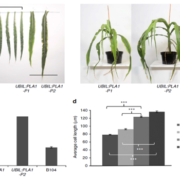
Altered expression of Maize PLASTOCHRON1 (CYP78A) increases auxin levels, extends cell division duration and increases biomass and seed yield
Plant Science Research Weekly, ResearchPreviously, the rice PLA1 gene encoding a CYTOCHROME P450 (CYP78A) was shown to increase vegetative growth. Sun et al. enhanced expressed maize PLA1 specifically in the leaf growth zone under the control of the GA2ox promoter. Transgenic plants produced larger leaves and larger seed yields than control…
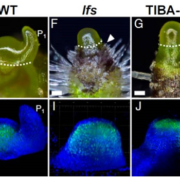
Coordination of auxin-triggered leaf initiation by tomato LEAFLESS ($)
Plant Science Research Weekly, ResearchCapua and Eshed explored the link between auxin and leaf initiation at the shoot apical meristem, using the tomato mutant leafless (lfs), which is an ortholog of the Arabidopsis DORNRONSCHEN (DRN) and DRN-like (DRNL) genes that encode AP2-type transcription factors. The lfs mutant and the drn/drnl double…
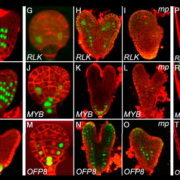
Cell-autonomously controlled ground tissue initiation by auxin in early Arabidopsis embryo ($)
Plant Science Research Weekly, ResearchMONOPTEROS is an auxin-response factor (ARF) that is necessary for root formation during early embryogenesis. Its activity is modulated by BODENLOS (BDL), an Aux/IAA protein that is degraded in the presence of auxin. Möller et al. investigated the transcriptional targets of MP in very early embryos…
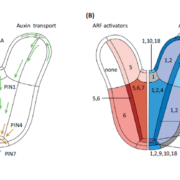
Review: The systems biology of auxin in developing embryos ($)
Plant Science Research Weekly, ResearchThe transcriptional response to auxin depends in large part on the interactions between ARF transcription factors and the Aux/IAA transcription inhibitors that interact with them. The crucial role of auxin in embryo patterning is revealed by the embryo patterning defects observed in mutants of ARF and…
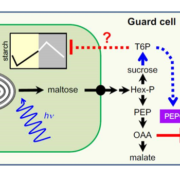
Update: Transitory starch metabolism in guard cells: unique features for a unique function
Plant Science Research Weekly, ResearchIn leaf mesophyll cells, some of the sugars produced by photosynthesis are stored as transitory starch, which is then broken down to provide the cells with energy during the night. Recent advances in imaging and staining and the use of mutants have enabled the pattern of accumulation of transitory starch…
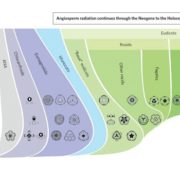
Review: Palaeobotanical redux: revisiting the age of the angiosperms
Plant Science Research Weekly, ResearchAlthough angiosperms are the dominant autotrophs in most parts of the world, their evolutionary origins remain somewhat mysterious. Herendeen et al. review the earliest evidence for angiosperms from the Early Cretaceous, and discuss fossil remains from earlier periods (Jurassic, Triassic) that have some…
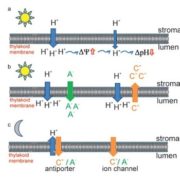
Review: Impact of the ion transportome of chloroplasts on the optimization of photosynthesis ($)
Plant Science Research Weekly, ResearchIn photosynthesis, light energy generates proton motive force (pmf) across the thylakoid membrane. The establishment and maintenance of pmf involves numerous membrane transporters as well as other ions. Szabò and Septea review how various ions (including K+, Na+, Fe2+, Cu+, Mn2+, Ca2+, Cl–) contribute…
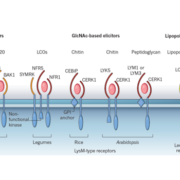
Reviews: Nature Insight: Plants ($)
Plant Science Research Weekly, ResearchNature journal published a special “Plant Insights” section featuring several excellent reviews. Zipfel and Oldroyd review Plant signalling in symbiosis and immunity (10.1038/nature22009), Bevan et al. write about Genomic innovation for crop improvement (10.1038/nature22011), Scheres and van der…

